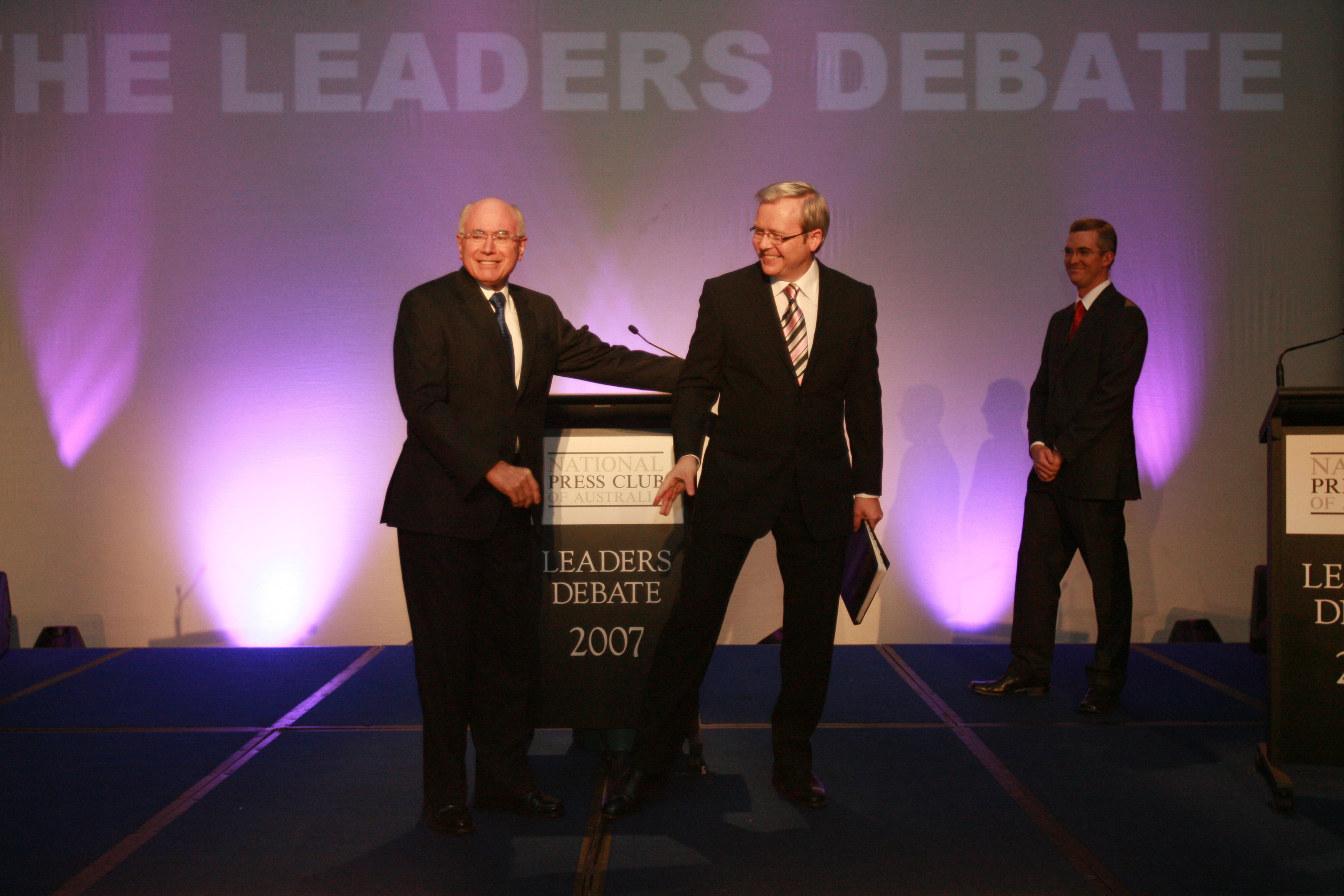E-Election 2007: Communications technology and elections
 |
The evening of 26 September 1960 was a defining moment for Western democratic politics. On that summer night in a CBS television studio in the city of Chicago, before an estimated audience of 70 million, two political candidates put forward their cases for election to the office of President of the United States of America. |
Popular history records that the viewing audience awarded that debate to John F. Kennedy over then Vice-President Richard Nixon because, in part, he looked more relaxed, more in command of himself. What is less well remembered is that the radio audience listening to the arguments put forward by the candidates awarded the debate to the Vice‑President.
In 1960 television was a new communications technology. Whether intentionally or by happy coincidence, John F. Kennedy’s personality and demeanour secured him a debate victory and established the belief that image was as significant as message and more powerful than argument.
In 2007 the Internet is the new communications technology for political campaigns. What drives the potential political power of the Internet is the virtual and viral relationship created between the communicator and the viewer. The Internet enables politicians to control, select and amend their messages – often in real time – and produce and disseminate materials at relatively low cost. Undoubtedly this ability to make information appear and disappear raises a host of questions but that is a topic for another day! Fundraising online can occur with physical anonymity and without the need for a raffle or an awkward pitch for donor contributions. Social networking sites enable an intimate exposure of the candidate to electors who may never need or wish to meet their representative.
At the same time the Internet gives viewers greater choice and control. With the ability to choose content with the click of a mouse, the Internet requires that viewers be both entertained and informed.
Competition for viewers’ eyes – let alone hearts or minds – is intense. Viewers can also participate in political debate through instant messaging, blogging and Virtual Town Halls or by creating and posting their own material to the Internet. Interestingly, age is no barrier to participation.
The power of the blogging community to influence political campaigns was first realised in the US in 2004. Democrat presidential candidate Howard Dean energised his campaign online. Few politicians can ignore the power of this activist community, however politicians should tread carefully in assuming that bloggers are homogenous, partisan or unaligned.
Creating a unique presence online could be the holy grail of politics. With an estimated 120,000 new blogs and 1.4 million blog posts per day, this is a congested marketplace of ideas but the rewards may be immense for those who create presence and establish credibility.
The Internet is slowly emerging into the living rooms of Australians and the next generation of political campaigning has begun. If radio emphasised message and television image, what will be the success factors for the Internet-astute politician? What chance that ideas and information will dominate politics in the first half of the 21st century?
Simon Edwards, Manager, Government and Industry Affairs Microsoft Australia